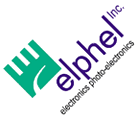01/16/17 [elphel-apps-camogm][master] by Mikhail Karpenko: Add frontend/backend scripts for disk formatter
Mikhail Karpenko committed changes to the Elphel git project :
Add frontend/backend scripts for disk formatter
Add frontend/backend scripts for disk formatter
01/16/17 [elphel-apps-camogm][] by Mikhail Karpenko: Add frontend/backend scripts for disk formatter
Mikhail Karpenko committed changes to the Elphel git project :
Add frontend/backend scripts for disk formatter
Add frontend/backend scripts for disk formatter
01/16/17 [elphel-apps-camogm][master] by Mikhail Karpenko: Add 'force' option, fix minor errors
Mikhail Karpenko committed changes to the Elphel git project :
Add 'force' option, fix minor errors
Add 'force' option, fix minor errors
01/16/17 [elphel-apps-camogm][] by Mikhail Karpenko: Add 'force' option, fix minor errors
Mikhail Karpenko committed changes to the Elphel git project :
Add 'force' option, fix minor errors
Add 'force' option, fix minor errors
01/16/17 [elphel-apps-camogm][master] by Mikhail Karpenko: Move format_disk installation to a separate makefile
Mikhail Karpenko committed changes to the Elphel git project :
Move format_disk installation to a separate makefile
Move format_disk installation to a separate makefile
01/16/17 [elphel-apps-camogm][] by Mikhail Karpenko: Move format_disk installation to a separate makefile
Mikhail Karpenko committed changes to the Elphel git project :
Move format_disk installation to a separate makefile
Move format_disk installation to a separate makefile
01/16/17 [imagej-elphel][dct] by AndreyFilippov: added output of the processing time
AndreyFilippov committed changes to the Elphel git project :
added output of the processing time
added output of the processing time
01/16/17 [imagej-elphel][master] by AndreyFilippov: added output of the processing time
AndreyFilippov committed changes to the Elphel git project :
added output of the processing time
added output of the processing time
01/15/17 [imagej-elphel][master] by AndreyFilippov: testing witgh Eyesis
AndreyFilippov committed changes to the Elphel git project :
testing witgh Eyesis
testing witgh Eyesis
01/15/17 [imagej-elphel][master] by AndreyFilippov: testing witgh Eyesis
AndreyFilippov committed changes to the Elphel git project :
testing witgh Eyesis
testing witgh Eyesis
01/14/17 [imagej-elphel][dct] by AndreyFilippov: changed scale in lpf
AndreyFilippov committed changes to the Elphel git project :
changed scale in lpf
changed scale in lpf
01/14/17 [imagej-elphel][] by AndreyFilippov: changed scale in lpf
AndreyFilippov committed changes to the Elphel git project :
changed scale in lpf
changed scale in lpf
01/14/17 [imagej-elphel][dct] by AndreyFilippov: fixed for not color-corrected images - color balance should be before color conversion
AndreyFilippov committed changes to the Elphel git project :
fixed for not color-corrected images - color balance should be before color conversion
fixed for not color-corrected images - color balance should be before color conversion
01/14/17 [imagej-elphel][] by AndreyFilippov: fixed for not color-corrected images - color balance should be before color conversion
AndreyFilippov committed changes to the Elphel git project :
fixed for not color-corrected images - color balance should be before color conversion
fixed for not color-corrected images - color balance should be before color conversion
01/14/17 [imagej-elphel][master] by AndreyFilippov: Merge remote-tracking branch 'origin/dct'
AndreyFilippov committed changes to the Elphel git project :
Merge remote-tracking branch 'origin/dct'
Merge remote-tracking branch 'origin/dct'
01/14/17 [imagej-elphel][] by AndreyFilippov: Merge remote-tracking branch 'origin/dct'
AndreyFilippov committed changes to the Elphel git project :
Merge remote-tracking branch 'origin/dct'
Merge remote-tracking branch 'origin/dct'
01/14/17 [imagej-elphel][dct] by AndreyFilippov: fixed slightly incorrect colors (window multiplication changing kernels)
AndreyFilippov committed changes to the Elphel git project :
fixed slightly incorrect colors (window multiplication changing kernels)
fixed slightly incorrect colors (window multiplication changing kernels)
01/14/17 [imagej-elphel][] by AndreyFilippov: fixed slightly incorrect colors (window multiplication changing kernels)
AndreyFilippov committed changes to the Elphel git project :
fixed slightly incorrect colors (window multiplication changing kernels)
fixed slightly incorrect colors (window multiplication changing kernels)
01/13/17 [imagej-elphel][master] by AndreyFilippov: Merge remote-tracking branch 'origin/dct'
AndreyFilippov committed changes to the Elphel git project :
Merge remote-tracking branch 'origin/dct'
Merge remote-tracking branch 'origin/dct'
01/13/17 [imagej-elphel][] by AndreyFilippov: Merge remote-tracking branch 'origin/dct'
AndreyFilippov committed changes to the Elphel git project :
Merge remote-tracking branch 'origin/dct'
Merge remote-tracking branch 'origin/dct'
